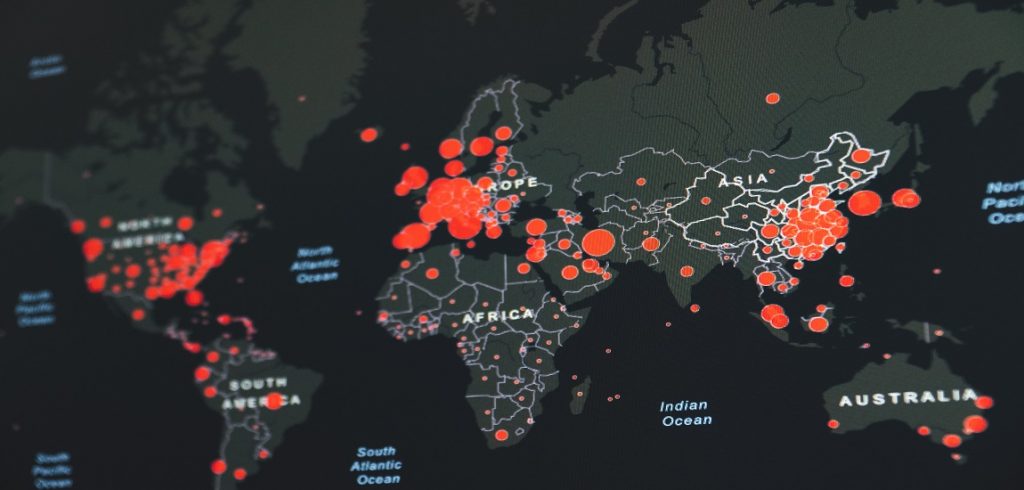
Pic Courtesy - UnSplash
As the global economy recovers from the impacts of COVID-19 pandemic, a growing list of risks threatening the businesses worlwide. However, most economists believe a recession this year is unlikely. The critical factors like – Ukraine conflict, Russian sanctions, China’s “zero COVID” policies, rising inflation, and interest rate hikes are all expected to crimp growth in 2022.
I am analyzing the factors for this.
The Ukraine Conflict
According to a UN Department of Economic and Social Affairs report, human costs continues to rise since the start of the Ukraine war on February 24, 2022. By late March, at least 1,119 civilians had been killed and at least 1,790 had been injured, with many of the victims still missing. In addition to the humanitarian crisis in Ukraine and its direct socio-economic impact on Ukraine’s neighbouring countries is worth mentioning. The negative war’s impact on the global economy has spread through multiple channels. The conflict has led to an acceleration of prices of rise in oil and natural gas prices, as well as metal and other commodity prices. Prices for agricultural commodities and base metals like aluminium, cobalt, nickel, palladium, and titanium have also increased. If this unwanted trend of prices rise continues, industrial sectors, particularly automotive and electronics, will be hit hard around the world.
Financial Market
In 2022, financial markets are in for a bumpy ride due to many factors. Some of those are of high impact like soaring inflationary pressure, rising interest rates, and ongoing disruption to international supply chains caused by the Omicron variant of coronavirus. According to analysts and financial investors, the emergence of Omicron has raised the prospect of a stagflationary start to the new year. This resulted in lower levels of economic growth despite intensifying price pressures in already stretched supply chains. Global equities fell to an 18-month low, as investors worried about rising inflation. In the United States, stocks ended a volatile session slightly lower, as investors balanced concerns about lingering inflation. Since plunging from its all-time high in January, the S&P 500 has come dangerously close to confirming a bear market.
Energy Prices
Soaring energy prices in Europe and Asia drove inflation much higher this year. This resulted in supplies struggled to meet demand after advanced economies eased lockdown measures over the summer. Inflation is expected to remain high in the short term, but to fall later in the year. The winter energy crisis will have an impact on Europe’s economies as well. According to Bill Blain, a market strategist and the head of alternative assets at Shard Capital, investors have not factored in the winter energy crisis, which is driving up prices and forcing some factories to close.
Inflation
Moderate inflation is perfectly normal in a growing economy. The Consumer Price Index for All Urban Consumers increased 6.8 percent in November, a 39-year high in the United States. When the price of goods and services rises rapidly, businesses and consumers are typically unable to purchase as much with their disposable income. As a result, high inflation slows down the growth. Raw material and input shortages, combined with higher energy prices, have driven inflation to a record highs in the eurozone and the United States. With supply chain disruptions proving to be more persistent than previously thought, inflation is expected to remain high.
Supply Chain Disruptions
Supply chain disruptions have been a major factor in the global recovery stalling this year. Shipping snarls, a lack of shipping containers, and a sharp rebound in demand after pandemic-related restrictions were lifted have left manufacturers scrambling for components and raw materials. The auto industry has been among the hardest hit, with output in the eurozone, including Germany, sinking in recent months. Carmakers have reduced production because intermediate equipment, particularly semiconductors, is in short supply. While there are signs that supply constraints are easing, such as lower shipping costs and increased chip exports, experts expect supply constraints to continue to weigh on growth well into next year.
The China Factor
A slowdown in China, the world’s second-largest economy, would undoubtedly increase investor concerns in 2022. With global demand for its electronic and medical goods, the Asian economic powerhouse helped the world emerge from the pandemic-induced recession in 2020. It was the one factor which led major economy to grow in 2020. It is expected to grow by around 8% this year, making it the second-fastest-growing major economy after India. The post-pandemic recovery, however, is being hampered by Beijing’s crackdown on its business titans. Furthermore, Beijing’s unwillingness to abandon its “zero-COVID” stance, which has kept the country isolated for more than a year and has resulted in restrictions following the emergence of even a single COVID case, would pose a significant risk to the global economy.
Geopolitical situations
Even as temperatures in the Northern Hemisphere fall, relations between Russia and its US and European allies have been very grim. Russia – Ukraine factors, related sanctions and Russia’s global cut-off is also impacting the global economy in many ways. Further on, US and its European allies are considering additional economic sanctions. Relations between the United States and China have also been strained over Taiwan, with Washington warning Beijing against unilaterally changing the status quo on the island territory.
New COVID variants
In November, financial markets were jolted awake by news that a new coronavirus variant, omicron, had been discovered in southern Africa. The highly transmissible coronavirus variant brought down global financial and commodity markets. Over the next week, global markets continued to sway as investors attempted to assess the economic implications of the new variant. It’s possible that omicron will not be the curveball that throws the economic recovery off course, but many future variant could be. If COVID-19 were to have a prolonged impact — into the medium term — it could reduce global GDP by a cumulative $5.3 trillion (€4.6 trillion) over the next five years relative to our current projection,” IMF Chief Economist Gita Gopinath said in October.
Margin induced meltdown
Another reason the stock market crash in 2022 is rapidly rising margin debt. Margin debt is the amount of money borrowed with interest from brokerages/institutions to buy or short-sell securities. It’s not uncommon for the nominal amount of margin debt outstanding to rise over time. A rapid increase in outstanding margin debt, on the other hand, is a bad news. Furthermore, we’ve only seen three cases since the beginning of 1995 in which margin debt increased by at least 60% in a single year. It happened just months before the dot-com bubble burst, right before the financial crisis.
Crypto Fall
The stock market is a money machine in the long run. However, in recent years, speculators have flooded the cryptocurrency market. Seeing Bitcoin gain as much as 8,000,000,000% in just over 11 years, or meme coin Shiba Inu gain 46,000,000% in a year, has created a level of FOMO which was never seen before. Unfortunately, the cryptocurrency market has been unable to separate from the stock market and establish its own identity. Furthermore, a sizable proportion of cryptocurrency investors are also investing in stocks. A cryptocurrency crash in 2022 would most likely have a negative impact on stocks that rely on the cryptocurrency ecosystem, as well as reduce investment capital for equities.
“Four Trends Suggestion” by Morgan Stanley Chief Investment Officer Lisa Shallet
In this grim situation Morgan Stanley chief investment officer Lisa Shallet suggests four trends that could further drive higher-than-expected growth with greater capital spending and improving productivity:
1. Innovation : Service businesses were forced to innovate digitally during pandemic-related shutdowns. This has resulted in not only increased investment, but also an explosion in start-ups, as well as unprecedented levels of public and private market activity—from fintech and cryptocurrencies to autonomous vehicles and artificial intelligence.
2. Deglobalization : Before the pandemic, businesses were already considering supply-chain localization due to trade tensions between the United States and China. Today’s inflation-inducing supply imbalances and inventory shortages, as well as increased sensitivity around cybersecurity, public health, geopolitics, and shifting regulatory frameworks in China, have all contributed to the trend toward domestic sourcing.
3. Decarbonization : The pandemic and related business closures reduced fossil fuel consumption and carbon emissions while increasing pressure on investors to avoid investing in such energy sources. This is a fact that is increasing cost pressures and may continue to support inflation levels.
4. Transformation of labor market: A labour shortage caused by workplace safety concerns and accelerated retirements, combined with employees seeking new leverage to change jobs or demand higher wages, may continue to drive up labour costs for businesses. Profit margins may suffer as a result.
These trends suggest that investors should prepare for an abundance of economic growth rather than a scarcity of it.




More Blogs
UPI And Pay Now Integration
India Australia Trade Agreement – An Analysis !
5G & Impact On Business